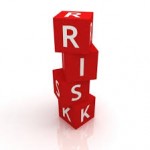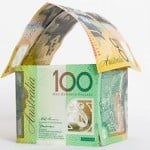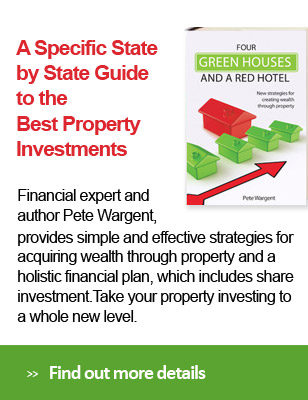Stock Market Autumn
QE 1, 2 and 3 in US, QE in Eurozone, QE in Japan... We have a problem.
I looked through my model which I constructed sometime in Oct 13, and it looked pretty much alright: very bullish on US and European equities, neutral on Asia x Japan, Emerging Markets, China. I made strong bets on developed market equities and made around 8% in 2014!
This year looked bubbly. It smelled like 1997 when Professor Case Shiller mentioned "irrational exuberance." Likewise, I was equally skeptical in the beginning of 2007. This time round, the bell has been rung. Valuations of the three biggest exchanges have reached "bubble" status and future returns are likely to be paltry the next 3 - 5 years.
To be sure, my model is not meant to be a market timing indicator. It merely cautions us to prepare for the inevitable.
Real Estate Autumn in Singapore, London, Most Australian Cities
I check the valuations of my property portfolio weekly. I noticed that my London portfolio has fallen by 3 - 4% over the last six months! For Singapore, valuations have fallen by around 4 - 8% over the last one year! For Australian cities, they have peaked and are now sideways.
I've always intended to buy properties in at least two cities that are counter cyclical. It's not easy to find although I managed to:
Cycle 1: Singapore, London, New York, Melbourne, Sydney, KL, Iskandar, most Asian cities belong to this category. The recovery was swift from 2009 onward and is starting to head down. They didn't fall by over 30% between 2006 - 2008.
Cycle 2: any city that fell sharply during the global financial crisis and is only just beginning to recover. E.g. Lisbon, Dublin, Madrid, Barcelona, Athens, Milan, Rome, Seattle, Los Angeles, Florida. I believe they will continue to head up because most have only just bottomed or have just turned up.
I failed to invest in cities in cycle 2 either because financing was not available in the case of European cities, or the taxes are too complex and high in the case of US cities.
Note that the cycles of every cities are never always synchronized. London's bull cycle started in 1996 and continued unabated until 2014. It lasted 18 years and created many property millionaires and made property unaffordable to the first time home buyers. Singapore's cycle started in 2005 and ended in 2013. It lasted a mere 8 years because of the government's very swift response with land sales and increase of intensity of us.
What to do:
For equity investors, go for the cheapest valuations. They have fallen a lot and may be counter cyclical. Russia is one example of a very cheap market. China and Tech are somewhat cheap. Stick to your asset allocation model. Medium risk investors should stick to 60% bonds, 40% stocks. High risk probably 75% stocks and 25% bonds. Low risk probably 20% stocks and 80% bonds.
For property investors, rebalance your portfolio to ensure that cashflow is ample. Sell off those that do not generate enough cashflow to even cover interest expense. Remember, property is extremely illiquid and incurs very high transaction costs. If you cannot sell your low yielding property at reasonable prices, then hold on to it, but save money like a squirrel. Because your rental income may just continue t fall. Load up on cash. You'll see a lot of bargains in the next three years.
Below is a very good article by Peter Wargent.
 Over the longer term, there are two ways to mitigate investment risk. One method is to use active management skills to dive in and out of the market, using skillful timing to beat the average return of the imperfect, cyclical market.
Over the longer term, there are two ways to mitigate investment risk. One method is to use active management skills to dive in and out of the market, using skillful timing to beat the average return of the imperfect, cyclical market.
QE 1, 2 and 3 in US, QE in Eurozone, QE in Japan... We have a problem.
I looked through my model which I constructed sometime in Oct 13, and it looked pretty much alright: very bullish on US and European equities, neutral on Asia x Japan, Emerging Markets, China. I made strong bets on developed market equities and made around 8% in 2014!
This year looked bubbly. It smelled like 1997 when Professor Case Shiller mentioned "irrational exuberance." Likewise, I was equally skeptical in the beginning of 2007. This time round, the bell has been rung. Valuations of the three biggest exchanges have reached "bubble" status and future returns are likely to be paltry the next 3 - 5 years.
To be sure, my model is not meant to be a market timing indicator. It merely cautions us to prepare for the inevitable.
Real Estate Autumn in Singapore, London, Most Australian Cities
I check the valuations of my property portfolio weekly. I noticed that my London portfolio has fallen by 3 - 4% over the last six months! For Singapore, valuations have fallen by around 4 - 8% over the last one year! For Australian cities, they have peaked and are now sideways.
I've always intended to buy properties in at least two cities that are counter cyclical. It's not easy to find although I managed to:
Cycle 1: Singapore, London, New York, Melbourne, Sydney, KL, Iskandar, most Asian cities belong to this category. The recovery was swift from 2009 onward and is starting to head down. They didn't fall by over 30% between 2006 - 2008.
Cycle 2: any city that fell sharply during the global financial crisis and is only just beginning to recover. E.g. Lisbon, Dublin, Madrid, Barcelona, Athens, Milan, Rome, Seattle, Los Angeles, Florida. I believe they will continue to head up because most have only just bottomed or have just turned up.
I failed to invest in cities in cycle 2 either because financing was not available in the case of European cities, or the taxes are too complex and high in the case of US cities.
Note that the cycles of every cities are never always synchronized. London's bull cycle started in 1996 and continued unabated until 2014. It lasted 18 years and created many property millionaires and made property unaffordable to the first time home buyers. Singapore's cycle started in 2005 and ended in 2013. It lasted a mere 8 years because of the government's very swift response with land sales and increase of intensity of us.
What to do:
For equity investors, go for the cheapest valuations. They have fallen a lot and may be counter cyclical. Russia is one example of a very cheap market. China and Tech are somewhat cheap. Stick to your asset allocation model. Medium risk investors should stick to 60% bonds, 40% stocks. High risk probably 75% stocks and 25% bonds. Low risk probably 20% stocks and 80% bonds.
For property investors, rebalance your portfolio to ensure that cashflow is ample. Sell off those that do not generate enough cashflow to even cover interest expense. Remember, property is extremely illiquid and incurs very high transaction costs. If you cannot sell your low yielding property at reasonable prices, then hold on to it, but save money like a squirrel. Because your rental income may just continue t fall. Load up on cash. You'll see a lot of bargains in the next three years.
Below is a very good article by Peter Wargent.
VOLATILITY RISK IN INVESTMENT PROPERTY | PETE WARGENT
When considering getting involved in property investment, few investors consider the concept of risk and return.
While expert investors are able to obtain outstanding returns with a moderate level of risk, for most investors higher returns are usually only attainable by increasing risk exposure.
BETA IN THE WORLD OF EQUITIES
Beta or ‘β’ is the measure of the volatility of a security of portfolio.

A Beta of 1 means that the security or portfolio is neither more nor less volatile or risky than the wider market.
A Beta of more than 1 indicates greater volatility so that, for example, a share that is twice as volatile as the stock market index is assigned a Beta of 2.
A Beta of less than 1 indicates less volatility, so a stock which is only half as volatile as the market is assigned a Beta of 0.5.
Beta is an important component of the Capital Asset Pricing Model, which attempts to use volatility and risk to estimate expected returns.
INVESTMENT RETURNS: YIELD AND GROWTH
Purchasing a security offers a shareholder returns in two dimensions.

Firstly, income in the form of dividends, and secondly, the shareholder hopes that the share price appreciates to attain capital growth.
Property is also a two-dimensional asset for investors: rental income and hopefully capital growth.
FOUR IMPORTANT RULES ABOUT BETA
Beta represents risk that cannot be diversified away; it is the systematic risk of being in the market for your portfolio.
There are four very important rules about Beta:
- Betas may change over time;

- Betas may be different depending on the direction of the market (e.g. greater for down moves in the market as compared to upward movements);
- The Beta is not necessarily a complete measure of risk; and
- The estimated Beta will be biased if the asset does not frequently trade.
APPLYING THIS TO PROPERTY
Remote properties tend to generate higher rental yields than those located in the capital cities.
Generally, this is because capital growth in regional areas has been comparatively low and thus the rent greater as a percentage of purchase price.

It’s argued by some that regional properties must be the star performers of the future because they generate higher rental yields (as a percentage, rather than as an absolute figure), and in some areas the capital growth can be outstanding too.
Sometimes this can indeed happen over periods of time.
But think back to what we said about higher returns for average investors (in this case high rental yields and growth too): high returns for average investors are usually only attained by some exposure to risk.
The risk here can be the Beta. There is an old saying in investment: “there’s no such thing as a free lunch.”
THE VOLATILITY RISK IN LOW-DEMAND PROPERTY
It’s fashionable to talk of property as a low risk asset class as we’ve had periods of high inflation (1970s, 1980s), credit growth (1990s) and yet more capital growth since the turn of the century.
Few of us in Australia know of major losers in the real estate game who have held property for anything approaching a decent time horizon.
Remember though, that most beginning investors buy one highly-leveraged, liquid asset, which can represent a risk.
The returns of the past do not prove that we’ll never have an extended period of negative returns.
Some investors talk about property only going up or property doubling in value over certain time periods, but history is no guarantee of the future.
We haven’t had a recession in Australia in two decades. What happens when we do? Consider the key rules of Beta as they might apply to property:
- Betas can change and may be higher on the way down. Hmm, if that plays out then I don’t want to be holding property in a low-demand suburb, regional or city-based!
- The estimated Beta will be biased if the security does not frequently trade. Wow, this certainly applies to property. Property is an illiquid asset, and while we’ve become used to credit growth in Australia, it’s entirely possible that credit may contract for a prolonged period. If you’re stuck with a depreciating, illiquid asset for which there is low demand, the outcome could be slow and incredibly painful.
TWO WAYS TO MITIGATE RISK
Spectacular, fast returns can be found in niche property investments. Small mining towns are a great example. High risk; high return.
 Over the longer term, there are two ways to mitigate investment risk. One method is to use active management skills to dive in and out of the market, using skillful timing to beat the average return of the imperfect, cyclical market.
Over the longer term, there are two ways to mitigate investment risk. One method is to use active management skills to dive in and out of the market, using skillful timing to beat the average return of the imperfect, cyclical market.
In the world of fund management, the excess or abnormal return achieved through active management for the level of risk borne is known as the Alpha (also known as Jensen’s Alpha or the Alpha coefficient).
Can we do that in property?
Yes, but average investors time markets poorly and I question the ability of the overwhelming majority to beat the transaction costs and capital gains taxes to come out significantly ahead.
The other way to mitigate risk is to invest and hold in suburbs where there is a phenomenal, growing demand (either in a capital city or elsewhere). Growth can still be strong in a ‘bull market’.

But even if the returns are more moderate on the way up, the compensation may be that you don’t get burned on the way down – as we’ve seen happen in some tourist property markets and particularly in some regional US and UK markets.
We’ll have a recession and a major real estate downturn one day, so we need to consider where we want to own property then.
Remember the story of the tortoise and the hare?
Slow and steady wins the race.
So it is in property.
